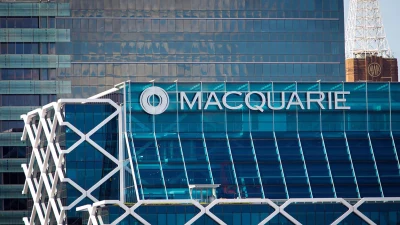FUM growth encourages Perpetual profit forecast
A 5 per cent increase in first-quarter funds under management (FUM) by Perpetual Investments has encouraged the group to forecast a 10 per cent increase in interim after-tax operating profit over the same period last year.
Perpetual reported FUM of $34.5 billion at the end of September this year, compared to $32.8 billion at the end of June.
The FUM growth failed to stop the group’s share price falling $2.59 to close at $72.62 yesterday, however, on the basis of the interim profit forecast falling 3 per cent short of market expectations.
It posted a $58.2 million operating profit in the first-half of last year, and a 13 per cent increase in operating profit to $131.5 million for the full-year 2005-06.
Most FUM during the quarter flowed into cash, fixed interest and mortgage products, which now accounts for 25 per cent of FUM, according to chief executive officer David Deverall.
He also highlighted a “growing inflow of funds into Perpetual’s new asset classes, particularly credit and enhanced cash products”.
Speaking at the company’s annual general meeting, Deverall said the forecast was subject to investment market fluctuations, particularly in the Australian equities market.
“For the first time in recent years there has not been a significant increase in ASX indices at the commencement of the financial year,” he said.
The investment performance of Perpetual’s Dublin-based global equities business, PI Investment Management, has also improved substantially, according to Deverall.
“For the 12 months ending September 30, the performance of our global equities fund exceeded its benchmark by more than 3 per cent.”
He added that, strategically, Perpetual had also maximised the potential of its core businesses, including Perpetual Private Clients, which now represents about 20 per cent of the profitability of its wealth management division.
“Over the past three years the business has consolidated its back-office operations, integrated and strengthened the Perpetual Private Clients brand and repositioned its focus on superior sales and service.”
Recommended for you
In this episode of Relative Return Insider, host Keith Ford and AMP chief economist Shane Oliver unpack the RBA’s decision to keep the cash rate on hold in the face of rising inflation and whether the governor’s hawkish tone is a sign of things to come.
In this episode of Relative Return Insider, host Keith Ford and AMP chief economist Shane Oliver discuss the September quarter GDP figures, which show Australia’s economy regaining momentum.
In this new episode of The Manager Mix, host Laura Dew speaks to Haley Devine, head of wealth management at MaxCap Group, to delve into private credit and commercial real estate.
In this new episode of The Manager Mix, host Laura Dew speaks to Benjamin Leung, head of systematic investments at Macquarie Asset Management, to understand the use of systematic investments.







